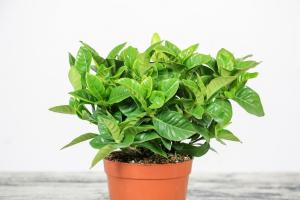Why coral beans lose their leaves
Temperature
The "Hometown" of coral beans is the tropical region of Asia and the Americas. The common characteristics of these two places are abundant sunshine and warm climate all year round. Therefore, when coral beans come to a low temperature or even cold environment, it is inevitable that their leaves will be frostbitten, yellow and fall off. In order to prevent freezing death due to low temperature, the plant should be kept in a warm and sunny room in winter

Humidity
In addition to environmental factors, this plant also has requirements for the soil it uses - loose soil with good air circulation should be selected. In winter, we often use water to keep the soil water, but excessive watering will rot the roots of coral beans, resulting in yellowing and even falling off of leaves. Therefore, friends planting coral beans should pay attention to the amount and frequency of watering each time. Loosening the soil irregularly helps to drain the soil

Coral bean planting tips
1. Proper fertilization. Fertilization is conducive to plant growth. It is appropriate to apply liquid fertilizer to coral beans once or twice a month
2. Don't water frequently in winter. You can wait until the soil surface is completely dry before pouring. You should not pour too much. The roots of coral beans cannot be soaked in water
3. Try not to have dust on the leaves of coral beans
4. You can change the basin every three to four months. Pay attention to the selection of soil when changing the basin
5. Friends planting coral beans in the north can move the plants to a warm and well lit room before "frost", which can effectively prevent fruit falling
6. The branches of coralline beans are lush. When the weather conditions are good, the messy branches can be properly trimmed

Don't think it's normal that everyone's coral beans lose their leaves. Even in the cold winter, coral beans should not lose their leaves, but in this case, if they lose their leaves, they are not well taken care of. That is, the growth environment temperature is too low or caused by excessive watering

 how many times do yo...
how many times do yo... how many planted tre...
how many planted tre... how many pine trees ...
how many pine trees ... how many pecan trees...
how many pecan trees... how many plants comp...
how many plants comp... how many plants can ...
how many plants can ... how many plants and ...
how many plants and ... how many pepper plan...
how many pepper plan...































